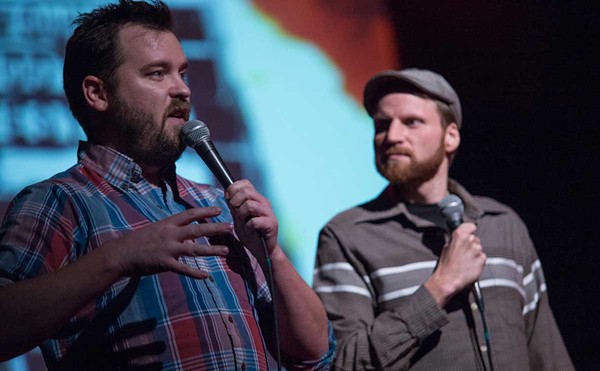The old saw that writing about music is like dancing about architecture, attributed to many but first uttered by Frank Zappa in a late-’60s interview, is only effectively dismissive if you don’t know how subtle dancing can be. Or writing. Still, one gets the point — and if ever there was a musician whose corpus challenged one’s nontechnical powers of description it was pianist Thelonious Monk. His music had the power to drive rank-and-file jazz journalists into the realm of poetic abstraction. Reading this excellent, chronologically ordered compendium by Rob van der Bliek, a sort of “Greatest Hits of Monk pieces” (if you can remember an article on Monk that was particularly funny or interesting or insightful, then it’s probably here), one is impressed both by the inspired attempts to capture Monk and his continuing elusiveness.
But then Monk has always been a special case. Most artists — writers, painters, musicians — start out as mimics, doing their impressions of those who have moved them to pursue their particular form of self-expression. With a little talent — little enough to be called a knack — a personal slant mixes with the influences and emerges to become the artist’s voice. But there are voices and there are Voices, and some artists achieve a unique Voice, usually early on. The artist who arrives on the scene with a unique Voice already intact is bound to cause some confusion since, if something is truly original, how can we tell if it’s any good? If its immediate antecedents aren’t apparent, what can we compare it to?
With this in mind, one should be charitable to those early reviewers of Monk whom van der Bliek here samples. By all accounts Monk had developed his personal vocabulary by his early 20s, nearly a decade before Blue Note began to extensively document him in 1947. The reception of those early recordings ranged from hostile to bemused as the critics tried to place him in the context of the burgeoning bebop revolution and its many virtuoso voices. Monk’s tendency to suggest rather than to spell things out led to early accusations that he was a player with a poor technique: “Two more sides by the pianist who did not invent bop, and generally plays bad, though interesting, piano” (from a 1949 Down Beat review of “Misterioso” and “Humph”) and “Art Blakey swings Monk’s fanciful left-wing bop creation, weaving mediocre solos into a unified whole” (from a Billboard review of “Evonce”) are fairly typical.
Musicians tended to be more favorably attuned to what Monk was doing while the writers had trouble getting past his weird-dude persona, figuring that the music, like the seriously distracted personality, was probably an affectation. It’s become a cliché that certain artists are ahead of their time, but in Monk’s case it’s demonstrably true, since he traveled from neglect to dismissive recognition to slow acceptance and finally acclaim while his music remained unchanged.
The turning point, according to van der Bliek, was Nat Hentoff’s 1957 five-star review of Brilliant Corners in Down Beat, though one wouldn’t want to slight the engine of historical imperative — appreciating Monk became more possible because the zeitgeist made it more permissible. As the Cold War culture became increasingly antagonistic to the status quo, previously venomous words like “strange,” “weird,” “offbeat” and “neurotic” started to suggest positive, or at the very least intriguing, traits. That and the persistence of Monk’s vision encouraged many listeners to begin to accept him on his own terms. Once that level of openness is achieved and the impulse to contextualize Monk is abandoned ... well, by 1964 the artist who was once too obscure to even have his own cult was on the cover of Time magazine.
Once the book reaches the point where Monk is taken seriously, the approaches break down into three main categories, the musicological, the psychological and the fannish, all valid and well represented. What we don’t get too much of is Monk himself speaking. Famously frugal with his words, Monk’s responses in his rare interviews tend to read like the cryptic utterances of a guru who’s forgotten to take his medications.
I can remember, as a young Monk fan in the ’60s, eagerly devouring his non sequitur responses in a Down Beat blindfold test (which van der Bliek reprints) and the seemingly Zen-like terseness of his reaction to an Andrew Hill cut: “The view here is great and you have a crazy stereo system.” And he could be wonderfully deadpan when faced with the well-meaning but obtuse interviewer, as in this exchange with Ira Gitler: “What do you think about the state of modern jazz today?” Monk: “Oh, it’s coming along OK now.”
Monk often flashed a very dry and wicked wit, though after viewing Charlotte Zwerin’s excellent documentary Straight, No Chaser, one must also acknowledge that the troubled Monk often didn’t make sense because he couldn’t.
Meanwhile the music abides and, while there’s no substitute for listening to it, it’s interesting to browse through the different responses. My personal favorite comes from John Litweiler, addressing Monk’s use of space and, incidentally, why his music can often sound both playful and profoundly sad: “This tension of space and sound is an ancient mystery of the spirit in solitude, a mystery that was always immediate to Monk.”
Which sounds just about right.
Richard C. Walls writes about the arts for the Metro Times. E-mail him at [email protected].





